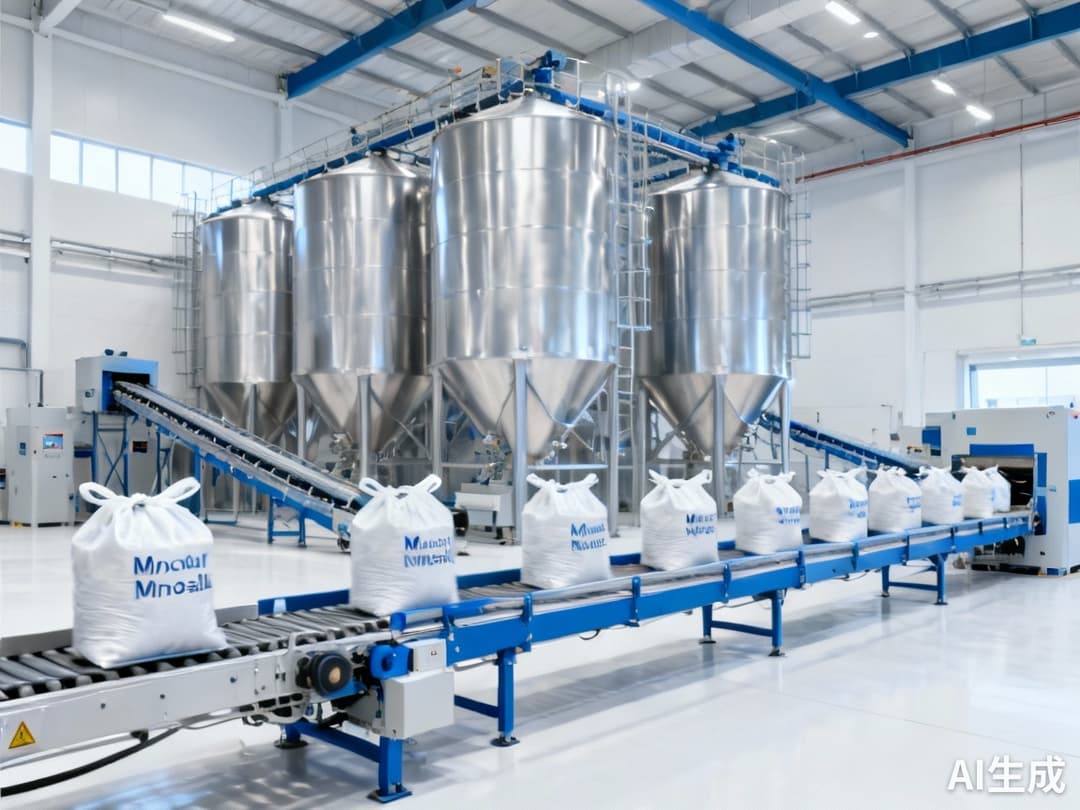Unlock $56B EPR Compliance Value with Mono-material Bulk Bags by 2029 #48

The $56 Billion EPR Compliance Opportunity
Global extended producer responsibility (EPR) regulations are fundamentally reshaping packaging requirements, creating both challenges and unprecedented opportunities for industrial packaging users. The mono-material bulk bag market is projected to grow from $39.4 billion in 2024 to $56.3 billion by 2029, representing a 7.3% compound annual growth rate. This growth is directly driven by EPR initiatives that mandate higher recycling rates and penalize non-compliant packaging materials.
Companies like Tingyi (Master Kong) Holding Corporation have demonstrated the tangible benefits of transitioning to bulk packaging solutions. By implementing ton bag systems and container transportation, they achieved significant plastic waste reduction and improved packaging recovery rates. Their experience validates that material reform and recovery utilization represent effective pathways for reducing plastic waste while maintaining operational efficiency.
Understanding the EPR Regulatory Landscape
EPR regulations transfer responsibility for packaging waste management from municipalities to producers, creating direct financial incentives for sustainable packaging choices. Under these frameworks, companies face escalating fees based on packaging recyclability, with non-recyclable materials incurring substantially higher costs.
Financial Impact of Non-Compliance
Companies using multi-material packaging face exponentially higher EPR fees due to complex separation requirements that reduce recyclability. Mono-material bulk bags simplify this process, with recycling rates typically 40-60% higher than comparable multi-material alternatives. This directly translates to lower compliance costs and reduced environmental levies.
Global Implementation Timeline
Major economies are implementing EPR frameworks with escalating requirements through 2029. The European Union's Packaging and Packaging Waste Regulation, Canada's Federal Plastics Registry, and various U.S. state-level EPR laws create a complex compliance landscape that demands proactive adaptation. Companies that transition early will avoid costly last-minute conversions and potential compliance penalties.
Technical Standards for Mono-material Bulk Bags
Effective implementation requires understanding the technical specifications and performance characteristics that define compliant mono-material solutions.
Material Composition Requirements
True mono-material bulk bags utilize a single polymer type throughout all components—fabric, liners, and closures. This uniformity ensures compatibility with existing recycling streams and eliminates the need for complex separation processes. Polypropylene-based systems dominate the market due to excellent strength-to-weight ratios and established recycling infrastructure.
Performance Validation
Compliant bags must meet or exceed traditional multi-material performance standards while maintaining recyclability. Key performance indicators include:
- Load capacity: Minimum 1:5 safety factor for stated capacity
- Stacking capability: Certified for multi-tier storage configurations
- UV resistance: Protected against degradation during outdoor storage
- Moisture barrier: Appropriate protection for hygroscopic materials
Four-Stage Implementation Framework
Transitioning to mono-material bulk bags requires a structured approach to ensure compliance and maximize value extraction.
Stage 1: Material Assessment and Baseline Establishment
Conduct a comprehensive packaging audit to quantify current material usage, recycling rates, and EPR compliance costs. Document:
- Annual packaging material consumption by type
- Current recycling and recovery rates
- EPR fee structure and projected cost increases
- Operational requirements for each application
Stage 2: Technical Transformation Roadmap
Develop a phased transition plan based on application criticality and compliance urgency. Prioritize:
- High-volume applications with imminent regulatory deadlines
- Products with straightforward technical requirements
- Regions with established recycling infrastructure
- Applications where premium performance isn't critical
Stage 3: Recycling Infrastructure Integration
Establish partnerships with recycling providers to ensure end-of-life processing capability. Key elements include:
- Supplier certification for material compatibility
- Closed-loop recycling agreements
- Tracking systems for recovery rate verification
- Documentation protocols for compliance reporting
Stage 4: Compliance Value Monetization
Implement measurement systems to quantify financial benefits from reduced EPR fees, lower material costs, and improved operational efficiency. Track:
- Reduction in per-unit packaging costs
- Decreased EPR compliance fees
- Transportation efficiency improvements
- Waste disposal cost reductions
Data-Driven Decision Framework
Selecting the appropriate mono-material solution requires evaluating multiple technical and operational factors.
Material Selection Matrix
Choose polymer types based on product characteristics and operational requirements:
- Polypropylene: General purpose applications, excellent chemical resistance
- Polyethylene: Superior moisture barrier, food-grade applications
- Compostable polymers: Organic products, soil-contacting applications
ROI Calculation Methodology
Calculate total value incorporating both direct savings and compliance benefits:
Total Savings = (Material Cost Reduction + EPR Fee Avoidance + Transportation Efficiency + Disposal Cost Reduction) - Implementation Investment
Most organizations achieve payback periods of 12-24 months based on typical EPR fee structures and operational efficiencies.
Future Outlook and Strategic Recommendations
The convergence of regulatory pressure, technological advancement, and economic incentives creates a compelling case for immediate action. Companies that delay transition risk competitive disadvantage through higher compliance costs and potential market access restrictions.
Strategic recommendations for packaging decision-makers:
- Initiate compliance assessments immediately to understand 2025-2029 regulatory exposure
- Pilot mono-material solutions in low-risk applications to build organizational capability
- Develop supplier partnerships to ensure access to certified materials and recycling services
- Implement tracking systems to document compliance and recovery performance
- Engage with industry associations to stay current on regulatory developments
The $56 billion market projection reflects fundamental shifts in packaging economics driven by EPR regulations. Companies that proactively embrace mono-material solutions will not only achieve compliance but will discover significant operational and financial benefits that create sustainable competitive advantage.
